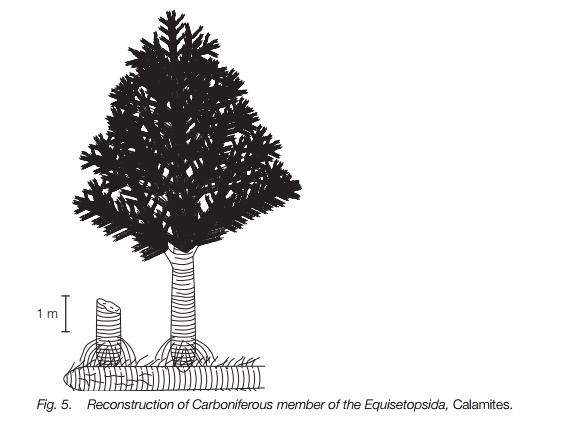Chapter: Plant Biology : Spore bearing vascular plants
Fossil Equisetopsida
Fossil Equisetopsida
The fossil history of the group is rich, with the earliest fossils dating from the Devonian period where rhizomatous herbaceous plants with forked leaves and divided sporangial branches are known. In the Carboniferous other fossils appear, varied in the structure of their strobili, including climbing plants and a fossil closely resembling Equisetum itself, so this may be an ancient genus. The best known fossil Equisetopsids, also from the Carboniferous period, were large trees forming an important constituent of coal, Calamites and its relatives.

Calamites (Fig. 5) grew to approximately 20 m in height but had many featuresmsimilar to those of living horsetails. They had jointed ribbed stems, extensive branching and scale-like leaves, though these were often bigger than those of living horsetails. There was an underground rhizome system from which trunks grew and it is likely that these trees formed large patches. The stems had a large central pith but secondary thickening was extensive outside this. Strobili were borne on the side branches rather than at the tips but varied in structure, some having leaf-like bracts by each sporangium, and some clearly showing true heterospory with two different sizes of sporangium. Some species retained the megaspores in their sporangia on the parent plant to be dispersed as a unit.
Related Topics